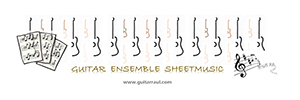Oliver Chandler
https://digitalcommons.du.edu/sb
In an attempt to explain how post-tonal harmonic progressions might “make sense,” Reginald Smith Brindle formulated theories of tension flow and tonal-atonal equilibrium in his 1966 textbook, Serial Composition. The former theory compares the number of consonant and/or dissonant intervals between chords, albeit without providing a consistent means of distinguishing between similar sonorities; the latter observes that various musical passages strike a balance between functional and non-functional harmony, albeit without explaining the nature of said balance. While his ideas are evocative, they lack theoretical finesse. Placing them in dialogue with recent developments in post-tonal scholarship helps to unlock their potential. Joseph Straus’s theory of voice leading in set-class space, for example, defines tension flow more rigorously: coherent post-tonal progressions often move smoothly from an initial, chromatically compact set class to one that is more open and consonant. To my mind, sets of the latter type resemble traditional seventh chords; they contain a tritone that requires resolution. If this tritone resolves to a third, then a contrapuntal resolution takes place, even if that third is housed in a dissonant harmony. Smith Brindle’s concept of tonal-atonal equilibrium neatly captures this effect—of simultaneous melodic release and increased harmonic tension. I explore the practical implications of these ideas through analysis of The Harmony of Peace from Smith Brindle’s Ten Simple Preludes (1979) and the first fragment of his El Polifemo de oro (1956).
Chandler, Oliver. 2021. “Reginald Smith Brindle’s Concept of Tonal-Atonal Equilibrium in Theory and Practice.” Soundboard Scholar 7, (1). https://digitalcommons.du.edu/sbs/vol7/iss1/5
Reginald Smith Brindle’s Concept of Tonal-Atonal Equilibrium in Theory and Practice





